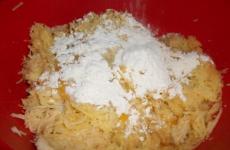Hammer structure. Bench hammer. Wooden hammer: what is it for?
At first glance, a hammer is the simplest working tool for the household and workshop, however, the market offers us a huge selection and even divides them into types. To make the work of craftsmen easier, to make it high-quality and convenient, manufacturers improved the standard hammer, modified it and gave it a new name. What types of hammers are there? How to choose the right hammer for a specific job? You will find answers and recommendations in this article.
How to choose a hammer
Hammers are mainly used for driving nails, they are also used for removing dried mortar from bricks, straightening sheet iron, and neatly working with tiles. Hammers vary in shape, weight, and are made of metal, plastic, wood or rubber. Therefore, choosing a hammer is not as simple as it seems, and you should be aware that using a hammer incorrectly is unsafe and can lead to injury.
Before buying a hammer with a steel spine, check its quality, take the same hammer from the counter and hit them against each other several times - no impact marks remain on high-quality products. Pay attention to the strong fastening of the hammer handle; it should not wobble. A quality wooden hammer handle is usually free of cracks and has long grain. There are also plastic or metal handles; unlike wooden ones, they do not require maintenance.
The reinforced plastic hammer handle is more durable and does not weaken the working part. All-metal hammers are available with a rubberized handle for comfortable operation and reduced vibration; the main advantage of steel hammers is their one-piece design. Hammers also differ in weight; for most household work, a hammer weighing 350-450 grams is suitable; for a more serious purpose, the weight will be at least 600 grams.
Types of hammers
Hammers help professionals get the job done without unnecessary time and financial costs, because the wrong choice of hammer can lead to damage to the material and loss of the craftsman’s ability to work. Below is a list of hammers known to us and their description, which hammer to choose for certain jobs.
plumber's hammer
A locksmith's hammer consists of a steel butt with a blunt end and a wooden handle; sometimes you can find locksmith's hammers with a plastic handle with an anti-slip coating. The tapered part of the working part is used for preliminary driving of small nails, the opposite side of the square-shaped butt is intended for use with full force.

Bench hammers are classified by weight, models for home use weigh from 300 to 500 grams, the heaviest hammer in this category weighs 2 kg. Thus, it is advisable to have a set of metalworking hammers in your toolbox, which will improve the convenience of work.
carpenter's hammer
A carpenter's hammer is a claw hammer, used for working with wooden materials, dismantling, and pulling out nails. Carpenter's hammers are distinguished by weight and length of the handle.
The claw hammer handle is available in several versions: wooden, steel, combined (metal and rubber).
wooden mallet
Another carpentry percussion instrument is the mallet. A wooden hammer is made of dense wood (birch or elm) and is used in cases where it is necessary to avoid dents in the material from impact.

Also, a wooden mallet is used to caulk houses, driving tow or moss into the cracks.
rubber hammer
A rubber hammer, like a wooden one, is used for precise work to prevent damage to soft wood or drywall.

A black hammer on a light surface can leave dark marks, for this reason a white hammer is of better quality.
carpenter's hammer
A carpenter's hammer is used as an aid in building houses. The hammer head has a nail puller with an elongated “tendril” on the back side; the protruding claw is used to create holes in the material. The working side of the striker can be round, square, smooth or grooved.
The corrugated surface of the working part is preferable for many craftsmen, since the slipping of the tool from the nail is minimized.
tile hammer
The tiler's hammer is designed for professional and fine work with tiles. Using a special hammer, you can evenly chop off the tiles and punch holes in them without disturbing the integrity.

Typically, the handle of this hammer is wooden, the working part is made of steel and rubber, the weight is about 80 grams.
hammer sledgehammer
The heaviest tool is a sledgehammer, which weighs 3 - 8 kg. The sledge hammer head is made of high-strength steel, the long handle allows you to work with both hands. A heavy hammer will make dismantling work easier and will help drive pillars into the ground.
Keep in mind that the sledgehammer requires extreme care when working, its weight is enough to crush the bone of a person or animal.
drywall hammer
The hammer, due to its shape, does not damage fragile materials.
The butt of the hammer is quite small in size, the working side is round in shape, and the opposite side is equipped with a small “hatchet” for convenient cutting of drywall.
copper hammer
The hammer with a copper head is mainly used by firefighters.
Copper does not produce sparks upon impact; for this reason, the tool is recommended for work in explosive environments.
jackhammer
A jackhammer is an electric tool for crushing asphalt and stone. The breaker tool has several working attachments to perform specific tasks.
The weight of a jackhammer depends on the intended work; the lightest tool weighs about 6 kg. used for finishing work, the heaviest weighs almost 30 kg. its labor force is intended for hard surfaces - soil or foundation.
Hammer- This is a hand tool used in metalworking, carpentry, carpentry and other works. Hammer Designed for driving, breaking, straightening, bending, etc. From this article you will learn what types and designs there are. hammers.
Hammer design:
Any hammer comprises heads or housings And handles, connected to each other through a hole in the body and a wedge driven into the handle.
The body consists of the part that is struck - striker, And tail or sock, the sock can have a different shape. The body is usually steel, but can be made of copper, lead, wood, or rubber.
The handle can also be made of various materials, most often wood, plastic, and metal.
Types of hammers.
Types hammers, their dimensions and weight are determined by GOST 11042-90. Let's look at the main types hammers:
- – has a round or square striker and a wedge-shaped toe. Carpentry hammer with a square striker is intended for working on wood, and with a round striker for working with sheet iron. Case weight plumber's hammer 250-800 gr.

- Carpenter's hammer- differs from a locksmith's sock in the shape of a nail puller for removing nails. Case weight carpenter's hammer 600-750gr.
- - the biggest hammer, used for cutting out partitions, recesses, removing old tiles, etc. The weight of the case is hammer 1-1.5 kg.

- Wallpaper hammer– used for driving small nails, distinguished by its small body and thin handle. The weight of the case is hammer 100-250 gr.
- There are also hammers with a body made of wood, rubber, lead, copper. Such hammers used for furniture assembly, critical work with pressure-sensitive parts, when working in explosive and fire hazardous areas.
A hammer is a simple tool that is used in the household, workshop and other human activities. It would seem that there is nothing simpler than the design of a hammer, but in fact, there are a large number of different types of hammers, which differ not only in their shape, but also in their purpose. So, in order to make the work of craftsmen easier, many modifications of the hammer were invented, which were not only changed and given a new purpose, but also given a new name. And this is quite normal, because we are no longer talking about an ordinary hammer, but about a completely different tool.
Well, in this article we will try to tell you in as much detail as possible everything that concerns the hammer and its types. Remember that a hammer can have more than one function, but several at once, depending on its design, so that's what we'll take a look at.
How to choose the right hammer?
As a rule, a hammer is used for the main group of purposes - driving nails or other fasteners (dowels, slate nails, etc.), to remove dried areas of mortar on bricks, as well as for straightening sheet metal or carefully working with tiles. Hammers differ in shape and, accordingly, weight; they consist of a metal base, plastic or wood, rubber and other durable materials. Therefore, in order to choose even the most ordinary hammer, you need to have sufficient knowledge to understand which hammer can be used in a particular case, and which is safer to use so that it does not lead to injury.
Before you buy a hammer with a steel spine, you need to carefully check its quality. To do this, you can take exactly the same hammer on the counter and hit them several times. As a result, there will be no marks left on a high-quality instrument, even after several strong blows. Also, pay close attention to the fastening of the hammer handle - under no circumstances should it dangle or have any play. A normal, high-quality handle made of wood should not have cracks and should consist of long fibers. In addition, there are also plastic handles or metal handles that require significantly less maintenance.
There are also options with a reinforced plastic hammer handle. This handle is more durable than the others, and does not allow the working part to be loosened. If you are dealing with a completely metal hammer, then it must have a rubberized handle. This is necessary for several reasons - to weaken the effect of vibrations from impacts on the hand, and for example, in this case - imagine that you are hammering a nail into a wall. It would seem that there is nothing dangerous in this, but when driving a nail, you can get into a live part, that is, into a wire that can shock you through the nail and hammer. Therefore, a pen in this case is required. The advantage of this hammer is its one-piece design, which provides it with high strength. Also, hammers are distinguished by weight - for a home tool, a 350-450 gram hammer will be enough, and in the case of more serious work, a hammer of more than 600 grams will be enough.
Types of hammers
Now, we come to the topic of the types of hammers that exist today. Thus, most hammers help to cope with certain tasks, in each specific case. But if you choose the wrong hammer, this can lead to disruption of the structure of the material or to malfunction of the tool itself. In general, let's look at which hammer is needed when and in what case.
Locksmith's hammer
This type of hammer is one of the most common - the familiar design of a classic hammer. It consists of a steel butt with a blunt end and a wooden handle, which can also be made of plastic with a special anti-slip coating. The second part of the steel butt tapers to form a wedge that can be used to drive small fasteners and for other purposes. The blunt end of the butt is used to work at full force.

Pipe hammers are classified according to their weight. Thus, models for domestic and household use have a weight range from 300-500 g. The most massive hammer in this case weighs about 2 kg. Therefore, it is imperative to have at least one such hammer in your own toolbox.
Carpenter's hammer
The main difference between this type of hammer is its additional “nail puller” function. As a rule, such a hammer is used when working with wooden products, since nails are most often used in combination with this material. Also, a significant difference between a carpenter's hammer and a mechanic's hammer is weight. Carpenter's hammers are much lighter, although they differ in weight. The length of the handle is also distinctive.


In general, speaking about the hammer handle, it is worth noting that it can be made in several variations - it can be wooden, steel or combined (a combination of metal and rubber). The average weight of such a hammer is approximately 250-450 g, the length of the handle varies from 20-30 cm.
Mallet (wooden hammer)
The next type of hammer is also used exclusively in carpentry. This hammer is made entirely of wood, which means that it is intended exclusively for working with wood materials. The type of wood from which the hammer is made is birch or elm. With this hammer, no marks remain on the surface of the product after impacts, so it is the best tool for working with wood.

Rubber hammer
Just like a mallet, this type of hammer is designed for accurate work with parts. This is an excellent way to prevent damage to soft wood, plasterboard or plastic. Needless to say, such a hammer is made entirely of rubber (or has a metal handle and a rubber butt). The disadvantage of such a hammer is that dark rubber marks may remain on light-colored surfaces, so white rubber hammers are available for sale.

carpenter's hammer
A hammer for carpenters is very convenient and indispensable for builders. The head of this hammer has a nail puller on one side, which has an elongated “tendril” that serves as a protruding claw and is used to create holes in workpieces. The working side of the hammer can be round or square, less often smooth or grooved. By the way, the corrugated surface is very convenient in that the likelihood of the hammer slipping during impact is significantly reduced.

Tile hammer
This hammer is necessary for working with tiles, so it can be used to perform “delicate” work. Based on this, the hammer has a light weight, a small striker, with which you can evenly chip off the tile or punch holes in it without making cracks. The weight of the hammer is about 80 g.

Sledgehammer
Perhaps the largest and heaviest hammer needed for power work. The weight of this hammer ranges from 3 to 15 kg, so it is often difficult to even lift it, let alone operate it. Designed for both installation and dismantling work. Examples: for breaking walls and dismantling surfaces, or for driving posts and pipes into the ground, into other pipes, and so on.
There is an amazing variety of different types of hammers available these days! Which hammer you should use depends on the material you are hitting and the goal you want to achieve. We try to go through the different types of hammers and under what circumstances which type of hammer should be used. We'll also give you some hammer safety tips.
You're using a hammer to hit something, so you first need to make sure it's safe to hit and that you're hitting it cleanly and in the right place.
In many cases, you will need to protect the object you are hitting with the hammer so that it does not suffer from the impact.
Here are our tips for working safely with a hammer:
- Put on glasses; especially when you are driving nails into concrete or other materials that may break or fly off on impact.
- Always use the head of the hammer, not the side: the metal here is not hardened, is much thinner where the handle goes and can cause damage to the body.
- All hammers require some maintenance. If the hammer handle is secured to the hammer head with wedges, they may become loose or the handle may break if it is made of wood. This means that the hammer head can break off and, sliding off the handle, hurt your hands or even fly away. Advice: Soak the head of a hammer with a wooden handle to swell the wood, which will ensure a tighter fit between the head and the handle. You may need to add new wedges if necessary.
- The flat head may become polished from use and slip off the nail upon impact; To prevent this, roughen the striker using sandpaper.
- Protect delicate surfaces from hammering by using a piece of metal or wood to absorb the impact. To do this, place a piece of metal or wood on the surface you want to hit, and then hit the guard, not the object directly: it will protect it.
- To protect delicate wood surfaces, use a hammer to drive nails without striking the wood.
- Always use the correct hammer for the job you are doing, this will make the task easier and help you avoid potential hammer damage to yourself and the surfaces you are working on.
Hammer parts
Although a hammer is a very simple tool, there is some terminology that has been developed to describe the various parts.

The basic shape and design of the hammer has not changed for hundreds of years. Traditionally, the handle was made of wood, most often ash or hickory. Now, with the advent of other materials that can absorb shock, hammering has become better and much easier and/or stronger.
In most cases, the hammer heads are made of metal and this is the part of the hammer that has undergone the most variation. Here are some of the common parts of a hammer head:

Typically, the handle is connected to the head through a hole in the head (the eye). The handle is attached by driving wedges into the wood at the eye to expand the wood and fit it flush against the hole. In order to pull out such a handle, it will have to be damaged.
Types of hammers and what they are used for
There is a significant range of hammers that you can buy, but the average person will only keep 2 or 3 of them in their tool bag and that's probably all they'll ever need.
Here are the most common types of hammers that people use today:
This hammer is the most common type of hammer and is probably what comes to mind when most people think of a hammer. The claw hammer is a versatile hammer and can be used for many jobs. This makes it an absolute must-have for any tool bag. The most common weights are from 455 to 680 g.

The claw is used as a lever; usually has a notch that is used to pull nails out of wood. The claw is inserted under the head of the nail so as to catch the head. The hammer is then lifted and, using the claw as a fulcrum, pulled onto the handle.
The claw can be used for leverage in other situations, such as ripping off boards, but overuse can put stress on the joint between the head and handle, so check this area regularly.
Cross and straight Payne, Warrington or carpenter's hammers
These are different hammers for different purposes, which are determined largely by the weight and strength of the head. They all have a similar head shape with a cross or straight nose (also spelled "Peen") on the opposite side of the hammer head.

Warrington, carpenter's and Cross Pein hammers are mainly used for working wood. The Paine cross is used for hammering small objects from a button to a stud.
If you are holding a small nail with your fingers, it can be difficult to hit the head of the nail without hitting your fingers. Cross Payne can, by lightly tapping a nail between his fingers, hammer it in without injuring his finger.
The Pein can be at right angles to the handle (straight Pein) or parallel to it (cross Pein), but most often you'll see the cross Pein as most useful for driving nails and small nails.
Heavier cross or straight pein hammers are primarily used for shaping metal.
Round Payne
These hammers are sometimes called engineering hammers or mechanic's hammers. They have a rounded shape at the edge and hence the name: bol (from English - “ball”) payne. They are used to shape metal, cover a rivet, and round the edge off metal pins and fasteners.

Straightening, the process of manufacturing metal structures, is little used these days, as is hardening the surface of the metal by repeated tapping.
This was mainly done with the flat side of a hammer.
The weight of ball-pain hammers varies from 55 - 1100g, although most of them are in the region of 110 - 165g. Handles are traditionally made from ash or hickory, although modern materials are now more commonly used as they dampen vibration upon impact.
Sledgehammer or cone hammer
It is used to hit a chisel, break up masonry, or simply smash things like a tiny sledgehammer. 
They are usually double-sided and have a wooden or resin handle. They are a vital tool for the builder and are used throughout the construction project.
Blacksmith Hammer
They are similar to cone hammers, only they have a longer handle and, as a rule, are slightly heavier (3-14 kg). They are used to destroy masonry, stones and concrete. They are also useful for driving stakes.

Real force can be applied by swinging the hammer like an axe; The large handle combined with the weight of the head will provide enormous momentum and striking power.
A variation is the Deadblow hammer (a sledgehammer with a rubber knob on the end). This is another hammer designed to minimize surface damage and is designed to provide maximum power upon impact.
As a rule, they have an internal cavity filled with steel or lead shot. This increases the impact force, which allows you to deliver a more powerful blow without the risk of damaging the object, and also reduces the rebound when a blow is made, since the hammer head remains on the surface after impact.
Kiyanka
K iyanka is a wooden block on a handle. It is used to drive a chisel, drive dowels, or join wood joints together. It is an essential tool for a carpenter or carpenter.

They are typically made from beech (hardwood) and are used where a metal hammer would cause damage to the surface or where other tools such as a chisel are used.
In general, the head of the hammer is made slightly conical to ensure proper contact with the workpiece you are working on.
We've covered the most commonly used type of hammer so far, but there are a number of less commonly used hammers that are used in specialized jobsites.
Drywall hammers
 Drywall hammer - a hammer for working with a dry wall, has a small hatchet on one end of the head and a hammer on the other. The ax is used for cutting drywall for pipes and various holes or openings in plasterboard.
Drywall hammer - a hammer for working with a dry wall, has a small hatchet on one end of the head and a hammer on the other. The ax is used for cutting drywall for pipes and various holes or openings in plasterboard.
Sometimes they have magnetic heads to hold pins, screws/nails, which can be very useful. Traditionally, a plaster hammer used to be used (for nailing shingles), but now drywall is used and this hammer is not necessary, except for work in old buildings.
Rubber and soft hammers
 Rubber and soft hammers are hammers that are designed to not damage the surface you are working on and are sold separately for wall, wood, chisel, etc.
Rubber and soft hammers are hammers that are designed to not damage the surface you are working on and are sold separately for wall, wood, chisel, etc.
These hammers can have interchangeable hammer shapes, which are useful for woodworking, loosening tight doors/windows, working on fittings including chrome and rubber surrounds, or for light assembly work: getting parts into place.
Aluminum hammersAnd aluminum hammers are soft hammers that are used to shape metal without damaging the molding surface.
| Falling HammerDropping Hammers - Used to shape metal on a block or anvil.
|
Copper and covered hammerCopper and Covered Hammer - The head of the hammer is made of copper at one end and rawhide at the other. It is used to reshape metal when you don't want the hammer to leave marks on it, such as on the body of a car.
| Geologist's JackhammerA geologist's jackhammer is a small ax with spikes on one end for breaking rocks. At the other end, the head provides a flat surface for breaking small rocks. In addition to geologists looking for fossils, masons sometimes use these hammers to remove seams in old brickwork.
|
Rack hammersRack hammers are hammers with a small ax on one end for cutting and for nailing and nailing plaster strips.
| Ironing hammerA ironing hammer is a hammer for working on metal. It is used to smooth out metal that has previously been shaped with another hammer.
|
Roofers and tilers' hammersThis hammer is used by roofers. It has a tenon on one end to create nail holes in slate. With the other end they knock on the nails that hold the slate in the roof sheathing. It usually has a grip in the middle for pulling out (removing) nails.
| Upholstery hammersAbout Upholstery Hammers - These hammers usually have one magnetized or splined head to secure the upholstery nails, and then you can turn the hammer and use the other end of the normal head hammer to finally drive the nail. Both sides on the head are small and tender. |
BushhammerA mason's hammer is used to chip (peel) old mortar from bricks and tiles. | Descaling hammerThese hammers are used to remove scale and scale from boilers and large pipes. |
Hammer-pick (mason)M pick (mason's) hammer - This is a hammer used by builders sometimes as a chisel (Paine) at both ends, or sometimes they may have a hammer at one end and a chisel at the other. Typically, they are used to break bricks cleanly.
| Pin or frame hammersPin or Frame Hammers - These hammers are used by photo frame makers.
|
Pneumatic hammers

This powerful tool drives nails, tacks and staples and is called a pneumatic hammer. It can be electric or pneumatic and is powered by electricity or gas, respectively. It is designed to make heavy work easier, such as those involving many nails or fitting floor slabs.
If you found this page interesting, share the link to it with your colleagues and friends by clicking on one of the buttons below. Surely someone will be grateful to you.Hammers of various shapes and sizes are used for different types of work.
Types of hammers:
1.Locksmith's hammer has two different strikers - one is smooth, the other is tapered. The pointy hammer is a general-purpose hammer that can be used to drive extremely thin nails.

2.Carpenter's hammer It has a split back, which is convenient for pulling out nails. In stone cutting, when finishing corners and edges with a chisel, they hit it with a mallet.

3. Sometimes, in order not to damage the part, they use hammers whose striking part is made of soft material (rubber, copper, lead). Hammer with rubber or with replaceable nylon heads- quite convenient and common in everyday life. This choice of hammer is distinguished by the presence of a pliable head. This in turn helps convert the majority of the impact energy into retraction energy.

4.If you choose claw hammer, then it is optimally suitable for any carpentry work: with the help of such a hammer you can very easily hammer the largest nails into wood, and pull out unsuitable ones without unnecessary worries.
5. Choosing a hammer with a notched head is very suitable for carpentry work.

6. Kiyanka characterized by the presence of a round or acute-angled head made of beech (or other deciduous) wood. A mallet-hammer is used to hammer chisels into wood. The difference between a mallet and a hammer with a metal head is that the mallet does not damage the wooden handle of the chisel.

7. Balda has an inversely proportional mechanism of action. This hammer differs in that it consists of a long handle and a so-called sledgehammer with a wide head. This creates an extremely high impact force, and if you use rubber caps, you can avoid damage to soft materials.
By functional purpose they are divided into:

1. Claw hammers- hammers designed not only for hammering in nails, but also for removing them; for this purpose, they are equipped on the reverse side with two curved arches, replicating a nail puller.
2. Pick hammers- on the reverse side of which there is a small pick, such hammers allow you to tap stones, excess wood, and tiles. Typically, such hammers are used by masons, carpenters, and tilers. They vary in size and application.
3.Hammers with striker- intended for carpentry, equipped with a striker. The strikers can be narrow, forked, or square.


















